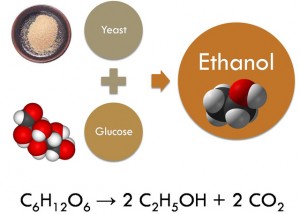There has been an explosion of different kinds of fermented products in the marketplace.
Foods such as sauerkraut, kimchee, kombucha and yogurts of all kinds are increasingly found at farmers’ markets and retail stores. Some of these products may be safely made at home, while others can not.
Fermentation. Fermented products are preserved by the action of microorganisms. Microorganisms (bacteria, yeast and/or mold) consume sugars and produce primarily acid or alcohol; carbon dioxide (CO2) is also produced.
In the manufacture of sauerkraut or genuine (crock) dill pickles, bacteria consume sugar (glucose) from cabbage leaves or cucumbers and produce acid, giving sauerkraut or crock dills their traditional tangy taste.
In the manufacture of cheese and yogurt, bacteria consume lactose (milk sugar) and produce lactic acid, allowing milk to coagulate and also providing flavor.
Newer products such as kombucha are the product of tea fermented using both bacteria and yeast to product a tangy, and bubbly, product. Kombucha is claimed to be good for human health, but research has found no evidence to support this claim. In fact, if kombucha is made using contaminated yeast and bacteria, it may be harmful.
Tested recipes for consumers support the home-manufacture of sauerkraut, genuine dill pickles, and yogurt. The home-manufacture of other products such as kimchee, kombucha, or fermenting other vegetables such as carrots or beets, is not recommended since safe guidelines have not been established for these products.
Steps for safely fermenting sauerkraut and genuine dills. There are several steps which allow for the safe home-manufacture of sauerkraut and genuine dill pickles.
There are several steps which allow for the safe home-manufacture of sauerkraut and genuine dill pickles.
Foods such as sauerkraut, kimchee, kombucha and yogurts of all kinds are increasingly found at farmers’ markets and retail stores. Some of these products may be safely made at home, while others can not.
Fermentation. Fermented products are preserved by the action of microorganisms. Microorganisms (bacteria, yeast and/or mold) consume sugars and produce primarily acid or alcohol; carbon dioxide (CO2) is also produced.
In the manufacture of sauerkraut or genuine (crock) dill pickles, bacteria consume sugar (glucose) from cabbage leaves or cucumbers and produce acid, giving sauerkraut or crock dills their traditional tangy taste.
In the manufacture of cheese and yogurt, bacteria consume lactose (milk sugar) and produce lactic acid, allowing milk to coagulate and also providing flavor.
Newer products such as kombucha are the product of tea fermented using both bacteria and yeast to product a tangy, and bubbly, product. Kombucha is claimed to be good for human health, but research has found no evidence to support this claim. In fact, if kombucha is made using contaminated yeast and bacteria, it may be harmful.
Tested recipes for consumers support the home-manufacture of sauerkraut, genuine dill pickles, and yogurt. The home-manufacture of other products such as kimchee, kombucha, or fermenting other vegetables such as carrots or beets, is not recommended since safe guidelines have not been established for these products.
Steps for safely fermenting sauerkraut and genuine dills.
 There are several steps which allow for the safe home-manufacture of sauerkraut and genuine dill pickles.
There are several steps which allow for the safe home-manufacture of sauerkraut and genuine dill pickles.- Use the correct proportion of salt to vegetables. Salt is important in fermenting cabbage and cucumbers. Salt selects for the right kind of bacteria (good bacteria) which produce the acid needed for fermentation, while also preventing harmful bacteria from growing. Salt helps to draw sugars out of the cucumbers or cut cabbage leaves, supporting the fermentation reaction. Salt also helps to lower the amount of oxygen in a crock or bucket, also supporting fermentation. When making genuine dills, acid (vinegar) is also added to the crock to help select for just the right bacteria for a successful fermentation.
- Use the right type of salt. Tested recipes call for the use of canning and pickling salt, not table salt or other kitchen salts. If canning and pickling salt is not used, the proportion of salt to vegetable may be ‘off.’
- Ferment at the proper temperature. Fermentation is best achieved at 68-72°F, although the range from 60-78°F may work. At ideal temperatures, fermentation may take 3-4 weeks, at lower temperatures fermentation may take 5-6 weeks. If the temperature is too high, spoilage bacteria will take over and ruin the fermentation.
- Seal the crock or bucket. The good bacteria which ferment cucumbers or cabbage grow best in a low-oxygen environment. Traditionally a crock to bucket was sealed with a plate and a stone or brick on top. A better seal is achieved with a food-grade plastic bag filled with brine. When the crock is properly sealed, you won’t have to ‘skim the scum’ that forms at the surface! Use only food-grade containers for fermentation. Many people still use traditional crocks; if the crock is leaking or cracked, line with a food-grade plastic bag prior to adding cucumbers or cabbage. Food-grade buckets or pails (3-5 gallons) such as those containing ice cream topping or deli salads make excellent fermentation vessels once they are cleaned and sanitized. Do not use trash cans for fermentation.
- Process sauerkraut or dills after fermentation. Once fermentation is complete, stabilize the sauerkraut or dills by canning. You may store the product in the refrigerator or keep it in the crock, but product texture and flavor will suffer. Follow an approved recipe for canning.


No comments:
Post a Comment